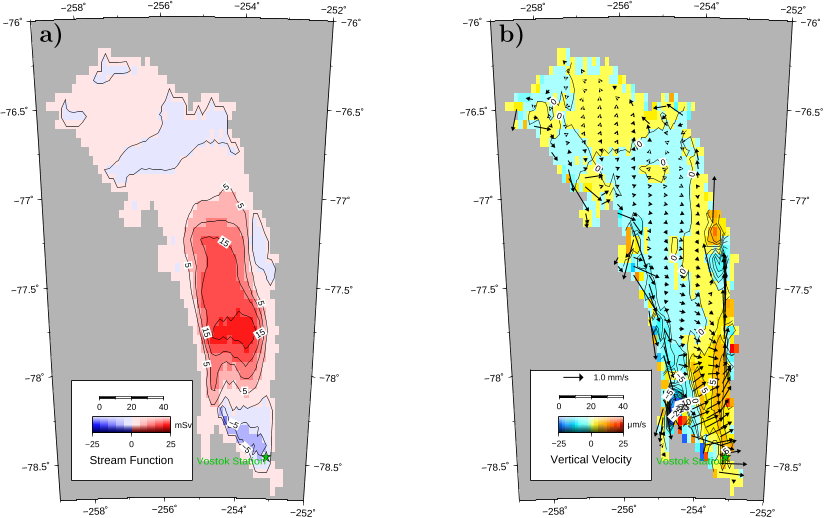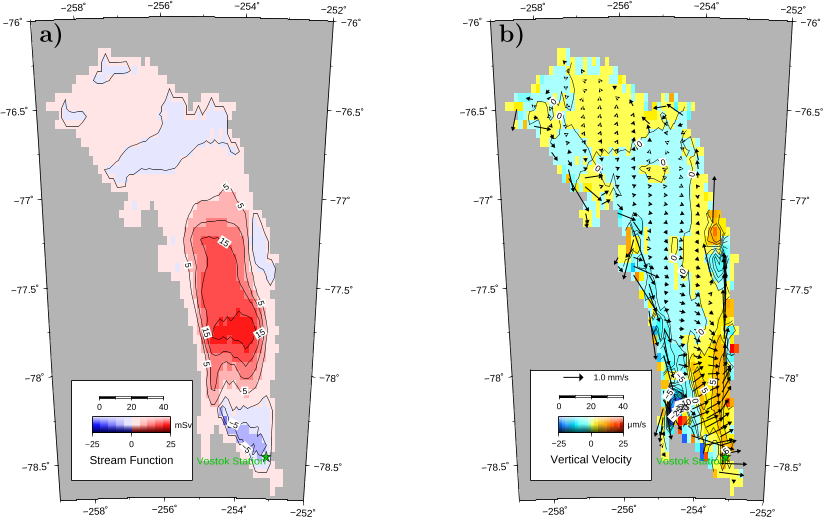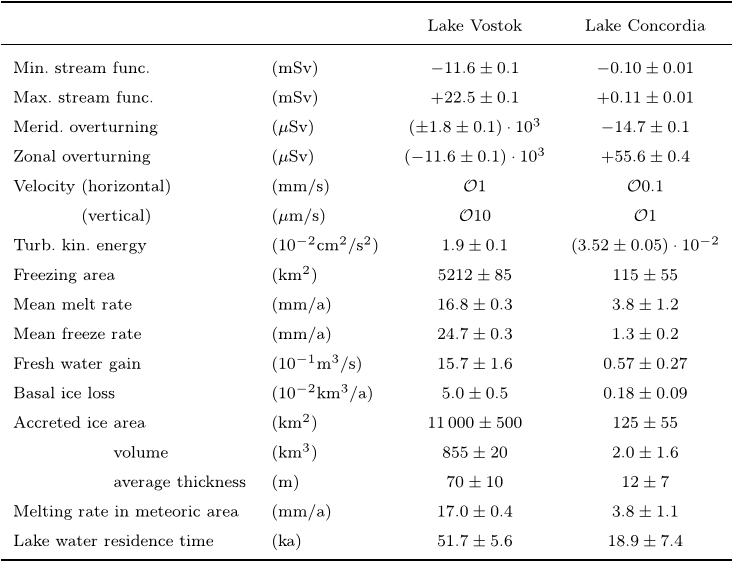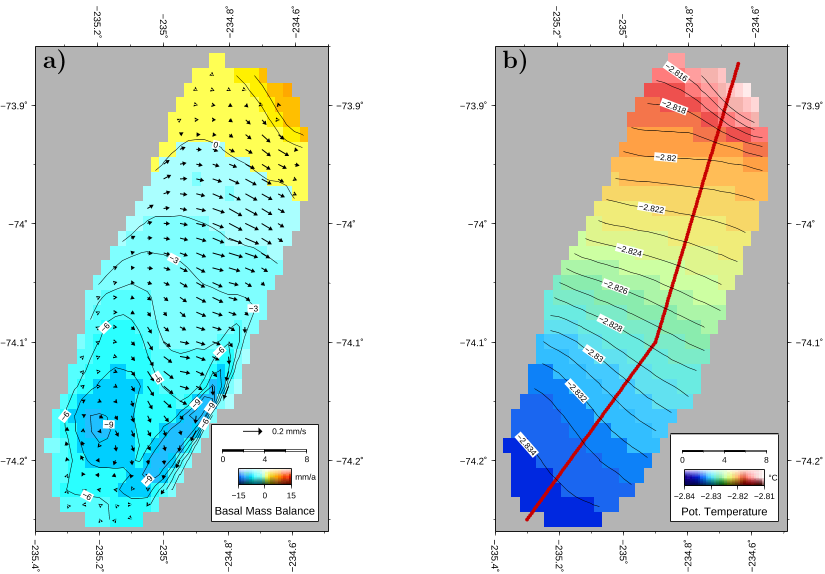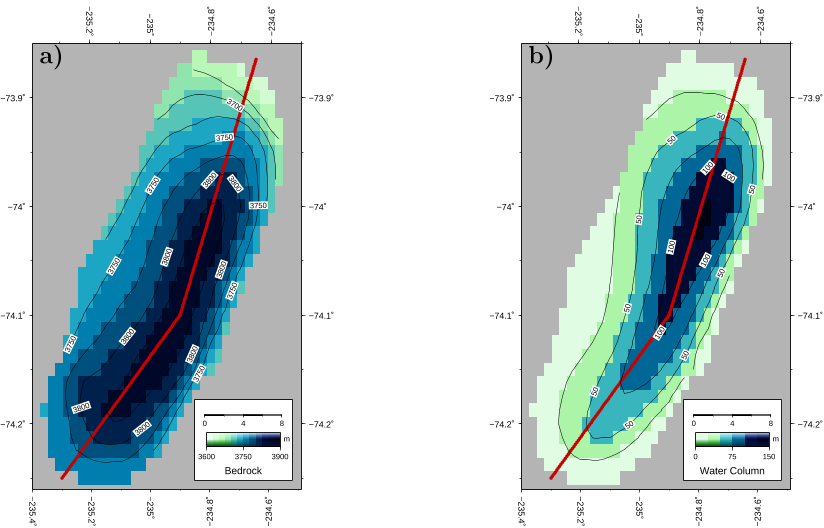Q1. What are the contributions in "A comment on the equation of state and the freezing point equation with respect to subglacial lake modelling" ?
This article aims three tasks: Then the authors describe the impact of the recent and self-consistent Gibbs 12 thermodynamic potential-formulation of the EoS and the EoFP on subglacial lake 13 modeling. Finally, the authors show that the circulation regime of subglacial lakes covered 14 by at least 3000 m of ice, in principle, is independent of the particular formula15 tion, in contrast to lakes covered by a shallower ice sheet, like e. g., subglacial Lake 16 Ellsworth. However, as modeled values like the basal mass balance or the distri17 bution of accreted ice at the ice-lake interface are sensitive to different EoS and 18 EoFP, the authors present updated values for subglacial Lake Vostok and subglacial Lake 19 Concordia.
